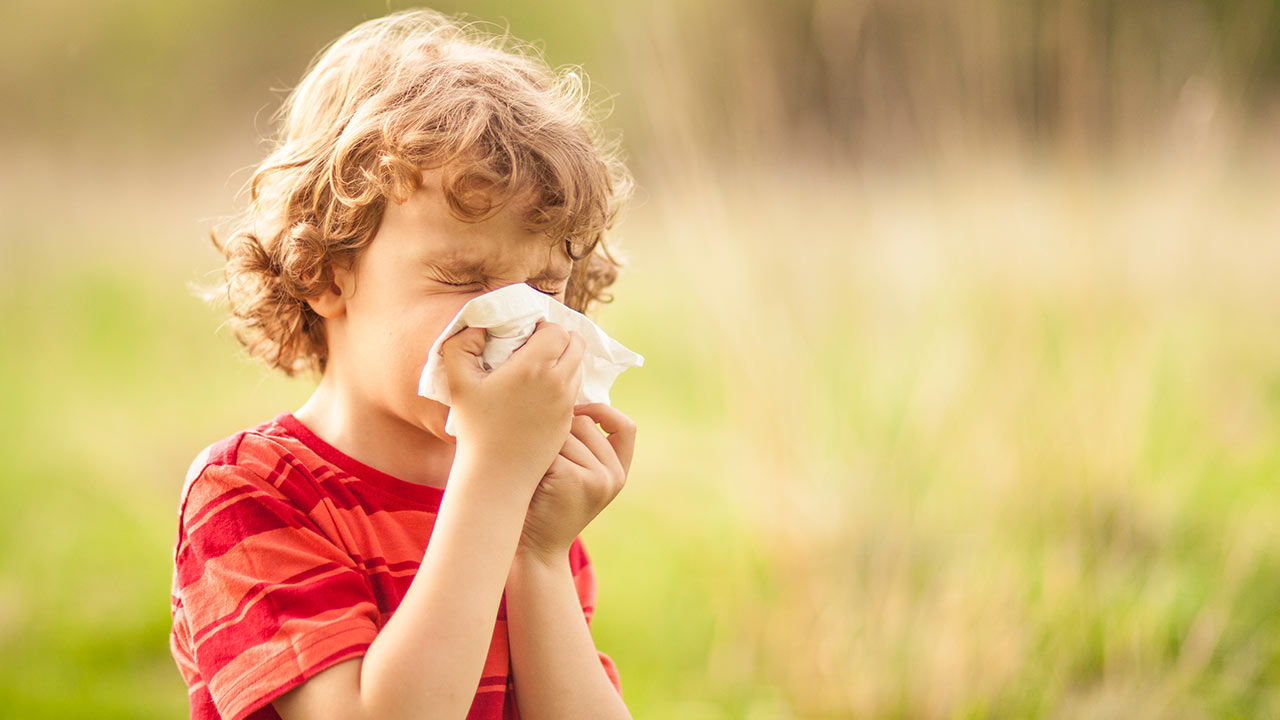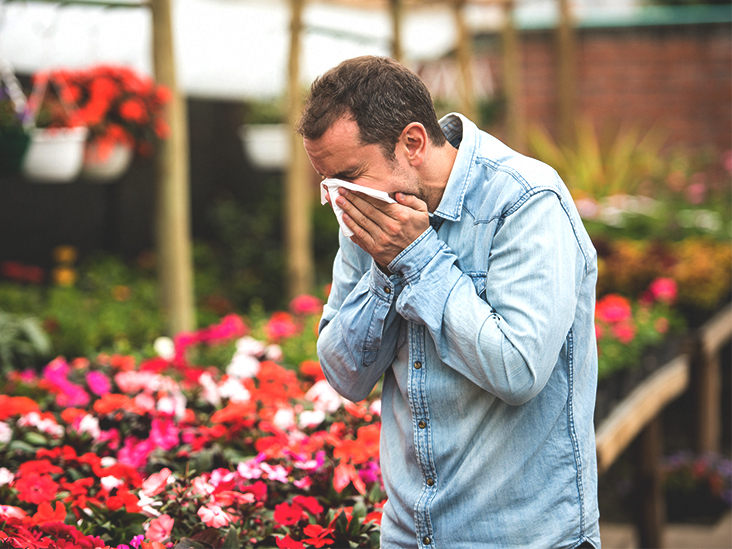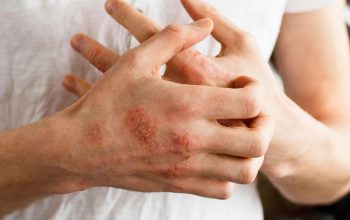Pollen triggers a cascade of reactions in the body in allergy sufferers. Staying away from pollen is nearly impossible. New research results give hope that allergies can be cured in the future – as long as small measures in daily life make the pollen season more bearable.
When trees, grasses and other plants bloom in Germany, it means a new season of runny nose, sneezing and itching for twelve million people in Germany. Anyone allergic to hazel and alder will feel the first signs long before they get warm. Climate change exacerbates the problem even more: Higher temperatures allow new species to grow, which not only lengthens, but also lengthens the pollen season.
Scientists are currently investigating new treatments that are already showing first successful results. Currently, however, the only option is to treat symptoms with nasal sprays, eye drops, and antihistamines.
Learn more about the links between pollution, climate change and hay fever and the causes of allergies. We explain how important a proper diet is – not only to minimize the risk of pollen allergy in childhood, but also to prevent cross-allergy in adulthood. With daily advice and new scientific knowledge, you can reduce complaints during the high pollen season.
What is hay fever
hay fever, also known as pollen allergy, is an allergy to inhalation and an allergy to pollen. Allergy is manifested by symptoms of the respiratory tract. According to the scientific classification of allergies, hay fever is type 1, immediate type. Thus, symptoms appear immediately after exposure to pollen. In addition to hay fever, immediate allergic reactions also include allergies to nuts and other foods, allergies to house dust, allergies to animal hair, and allergies to latex.
Typically, children develop pollen allergy between the ages of eight and 16. However, pollen allergy also occurs for the first time in old age. Why this is so is still unclear.
Hay fever triggers
Pollen allergy is almost exclusively triggered by very small wind-pollinated plants, as they are particularly easily absorbed into the upper respiratory tract. For example, hazel, birch, alder and grass are often allergic.
Good to know: Before people knew what allergies were, they noticed that some people react to hay with symptoms of illness. Hence the name of hay fever.
How does hay fever occur?
Allergies can, like allergic asthma and neurodermatitis, are also inherited. If both parents have allergies, their children are 50 to 70 percent more likely to develop allergies. It doesn’t have to be the same type of allergy. Rather, children inherit a tendency to develop allergies, be it pollen, food, animal hair, or insect venom.
What role do environmental factors play in hay fever?
In addition to smoking and increasing air pollution, scientists also cite climate change as a key reason for the steadily growing number of allergy sufferers. Higher temperatures increase the load on pollen.
Weather conditions have a strong impact on flora. Due to climate change, weeds from North America, Ambrosia artemisiifolia, can now multiply in Germany due to the mild temperatures. Scientists from the Helmholtz Center in Munich have found that weed pollen, combined with exhaust fumes containing nitrogen dioxide, has a high potential for allergies. Highly allergenic pollen further aggravates allergies and prolongs pollen time. Research also suspects a new allergen in the plant.
Good to know: Those who have had contact with animals in the first twelve months of their life and have been on the farm are less likely to suffer from hay fever and asthma. This was already shown in a study from 1999.
What foods contribute to hay fever and asthma?
An international research team has found that certain foods contribute to asthma, hay fever and allergic skin rashes. To do this, they studied the eating behavior of more than 319,000 young people in 51 countries. Estimates have shown that those who eat fast food at least three times a week are at greater risk of developing severe asthma, hay fever, or allergic rashes; at least three servings of fruit flour per week reduce the risk. In addition to sugar, carbohydrates, and saturated fatty acids, researchers suggest that trans fats found in fast food especially increase the risk of allergies. the antioxidants found in fruits will have the opposite effect.
When does pollen start?
Geographic location, outside temperature and humidity determine the length and intensity of pollen time. Mild temperatures in winter and spring ensure pollen season starts earlier. Research confirms that global warming increases pollen time by an average of ten days, up from 30 years ago.
In Central Europe, pollen counts may start in January until they peak in April and July. After grass pollen and wormwood, a ragweed plant from the United States can extend the pollen time by several weeks until autumn – the flowering period begins in August and ends in freezing temperatures. Only rain and colder temperatures provide pollen-free air for allergy sufferers.
Pollen Allergen Bloom Time by Month – Overview
The strength of the loads in the respective months may and may vary depending on the climatic conditions.
Hay fever symptoms
At first glance, pollen allergy symptoms are very similar to those of the flu or the common cold. Unlike an infection, hay fever does not heal within a few days.
What are the symptoms of hay fever?
Typical Pollen Allergy Symptoms:
- Nasal congestion
- Itchy eyes
- Regular sneezing
In response to an allergen (pollen), the immune system causes swelling and inflammation of the mucous membranes of the eyes and nose. Skin reactions such as water retention and skin inflammation can occur in addition to other symptoms. During pollen season, the immune system works at full capacity and fights against its own body – fatigue and weakness are the result.
Anaphylactic shock, the most severe form of allergic reaction that can result in a life-threatening reaction, is very rare in hay fever.
Good to know: Driving a car with hay fever can be dangerous. Sneezing regularly closes the eyes for a few seconds and limits their ability to respond.
Hay fever and food allergies
More than half of all pollen allergy sufferers, some studies even mention 90 percent, additionally suffer from food allergies. Pollen-related food allergy refers to cross-allergy. This means that pollen allergy sufferers often react to raw apples or nuts with a runny nose and sneezing. The structure of proteins in certain foods is similar to that of pollen. For this reason, the immune system of some pollen allergy sufferers also classifies them as dangerous and causes allergic reactions. Cross-allergy can only develop during a lifetime.
In the overview table you will find the most common cross-allergies with corresponding pollen allergies:
| Pollen allergy | Food |
| Wood pollen (such as birch or walnut) | Apple, peach, plum, nectarine, kiwi, cherry, pear, almonds, hazelnuts and other nuts, carrots, celery, raw potatoes, soybeans, lychee |
| Ambrosia | Melon, banana, tomato, cucumber |
| Mugwort | Carrot, celery, cumin, parsley, coriander, anise, fennel seeds, mango, grapes, lychee, sunflower seeds |
| Grass and cereal pollen (such as wheat and rye) | Spelled, barley, oats, millet, corn, wheat, rye (including flour and bran derived from it), tomatoes, legumes |
People who are allergic to birch pollen and grass pollen are especially difficult. They are particularly prone to food allergies, as allergens from birch pollen and grass pollen are similar to those of many types of vegetables and fruits. Wormwood pollen allergy sufferers mainly suffer from celery and spice allergies, which are difficult to diagnose.
What to do with food allergies and hay fever?
In some cases, people with cross-allergies can tolerate food better when there is no pollen. Allergies are often more severe during pollen season. So try to spot your food allergy during pollen season and avoid it if you have any noticeable symptoms. Cooking and peeling fruits and vegetables can improve tolerance. Cross-allergy sometimes only occurs with certain fruits. For example, you may not be able to tolerate certain types of apples. Stress, alcohol consumption and medication can increase allergic reactions.
Asthma – consequences of untreated hay fever
Information Center for Prevention and Early Detection (IPF) reports that one in six children are allergic to tree, grass or grass pollen – one third of them later develop asthma.
The main cause of asthma and allergic rhinitis (inflammation of the nasal mucosa) is pollen. According to epidemiological studies, half of all asthma sufferers are also allergic to pollen. In these cases, experts and doctors talk about gender reassignment in an allergist career. This means that hay fever with inflammation of the eyes and nose can develop into an asthmatic condition such as bronchial asthma. The sooner allergies are identified and treated, the lower the risk of gender reassignment.
What is bronchial asthma? Chronic respiratory disease is one of the most common diseases in the world. In children and adolescents, this is often due to allergies. Symptoms of an asthma attack caused by a narrowing of the bronchi are coughing, shortness of breath, chest tightness, and wheezing.

Correct Hay Fever Treatment
A common procedure for allergies is to avoid the allergen. This is nearly impossible with pollen allergies. Because as soon as we open the window, pollen flies into the house. Those using pills, nasal sprays, and eye drops may help relieve symptoms. However, this is not a permanent solution. Scientists from Munich are presenting research results that promise the best chances of success for allergy vaccinations.
How do you feel about hay fever?
The following tips will help you reduce your pollen load in your daily life.
When is the best time to ventilate?
Due to improper ventilation, many bring fine pollen into the house, which can settle anywhere. Time Ventilation is critical for allergy sufferers. Living in the countryside is the best time for the evening. If you live in a city, you should go on air early in the morning. In addition to ventilation, regular surface cleaning and floor mopping are also important.
Good to know: before bed for those allergic to pollen during pollen season: wash your hair and remove worn clothes outside the bedroom.
Frequent lawn mowing reduces the load on pollen in the garden
Mow your lawn two to three times a week while the plants you are allergic to have pollen. These are the recommendations of the Federal Nutrition Center. If the plants are unable to produce flowers due to frequent mowing, there will be no pollen and hay fever will be weaker. However, people who are not allergic to lawn mowing should be done as this will generate a lot of pollen.
Tablets, nasal sprays, eye drops are the active ingredients behind it
Antihistamines are classic for hay fever because they work quickly and are easy to use. Therefore, they are used specifically for acute complaints. They prevent the messenger’s histamine substance from causing inflammatory reactions in the body that cause typical allergy symptoms. If you choose older antihistamines, you may feel tired and dizzy. The new generation has fewer side effects with the same effect.
Cortisone nasal spray, often used in combination with antihistamines. relieves nasal congestion due to its anti-inflammatory effect. However, a noticeable effect appears only after 12-24 hours, full effectiveness – after three to seven days. Possible side effects:
- Dry nasal mucosa
- Nose bleeding
- Headache
Alpha sympathomimetics are active ingredients found in nasal sprays or drops that have a decongestant effect due to their vasoconstrictor effect. Due to the high risk of addiction, you should take this medication for a maximum of one week.
For mild complaints, eye drops or nasal sprays with Cromonen as the active ingredient may be sufficient. They reduce the release of histamine and thus local inflammation. They are well tolerated and have few side effects.
Leukotriene antagonists are other active ingredients that inhibit inflammation. They are used when sufferers have both hay fever and asthma.
Good to know: Medication may relieve your symptoms, but it cannot cure you of allergies.
Hyposensitization / Immunotherapy
Hyposensitization, also known as allergy vaccination or specific immunotherapy (SIT), can protect allergy sufferers from asthma and relieve allergic symptoms. This therapy attempts to desensitize the immune system with initially low doses of the allergen for several years. The allergen, in this case pollen, is administered to the allergic patient as an extract in varying doses and at intervals. If therapy is successful, the immune system no longer classifies the pollen as dangerous, and symptoms become less or disappear.
According to the Institute for Environmental Medicine at the Technical University of Munich, the success rate for allergy vaccinations is currently between 60 and 70 percent. Uncertainty of success and duration of therapy lead to high dropout rates. Therefore, the Munich scientists were looking for a way to better predict what the patient’s chances of success would be. To do this, they examined the activity of immune cells and found the following: In the second phase of treatment, our immune system decides whether it classifies the allergen as dangerous and whether other cells are involved in the immune response. Based on this, the researchers are currently working on a test with which they want to measure the patient’s chances of success.
Pollinosis – at a glance
What is hay fever
Hay fever is an allergic reaction to pollen, the symptoms of which are mainly found in the respiratory tract. This form of inhalation allergy is an immediate type – symptoms appear immediately.
What are the causes of hay fever?
The causes of hay fever are the finest pollen that reaches the respiratory tract from the flower through the wind. There are a large number of pollen allergens found at different times of the year depending on when the plants in question bloom – hence the terms early and late flowers. Food choices, climatic conditions, and where you live affect the severity of your allergies.
What are the symptoms of hay fever?
Stuffy nose, itchy eyes, and regular sneezing are typical symptoms of pollen allergy. In addition, skin reactions, fatigue and weakness may occur.
What food allergies do you have with hay fever?
If you suffer from hay fever, you also have food allergies up to 50 percent. This is due to the similar protein structure of pollen to the food that the immune system ultimately reacts to. Then they talk about cross-allergy. The foods people are allergic to depend on their pollen allergy – an allergy test can give you more information here.
Why is asthma the result of hay fever?
If hay fever goes unnoticed or is not treated, asthma may develop. The cause is persistent inflammation in the airways.
How to properly treat hay fever?
Classic medications like nasal spray, eye drops, antihistamines and cortisone seem to be the only solution for many allergy sufferers for some time without symptoms during pollen season. Studies show a good chance of success with immunotherapy over a long, asymptomatic period. The amount of pollen in everyday life can also be reduced with simple measures.




